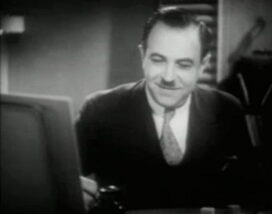Facts about Max Fleischer
Max Fleischer Biography
Max Fleischer was a pioneer in the artistic and technological development of modern animation, and the man behind classic characters such as Betty Boop and Popeye the Sailor. A New Yorker whose family had immigrated from Austria in 1887, Fleischer was an illustrator and editor for Popular Science magazine in 1914 before turning to animation around 1915. He and his brothers Dave and Joe created and patented to rotoscope, a device that allowed tracing over live action to create cartoons. Dave dressed up as a clown and Max drew over every frame to create the first of a series of cartoons called “Out of the Inkwell.” They worked on cartoons for Bray Studios from 1919 until 1921, then Max and Dave founded Fleischer Studios to make their own short subjects and cartoons. During the 1920s and ’30s the studio was very successful with cartoons featuring Ko-ko the Clown, Betty Boop and Popeye, and they became the chief rivals of Walt Disney in the field of animation. Their 1939 feature-length animated version of Jonathan Swift‘s Gulliver’s Travels was a box office hit, and in 1941 they began a successful series of cartoons based on the Superman comic book. But during the 1940s Max Fleischer got pushed out of his own business by Paramount Studios, who took over Fleischer’s operation and destroyed or re-cut the cartoons to fit the new world of television. Fleischer went on to work in less well-known animation jobs and was nearly left to obscurity. In the early 1970s things turned around and Fleischer Studios and Max Fleischer were recognized for their achievements in cinema by a new generation of fans and aficionados, but by that time Max was at the very end of his life.
Extra credit
Fleischer Studios is often credited with creating the first sound cartoon in 1924, one of a series that had song lyrics on the screen with the now-familiar “follow the bouncing ball” technique… The studio also made other features, including a movie explaining Einstein‘s theory of relativity and a movie explaining Darwin‘s theory of evolution.

